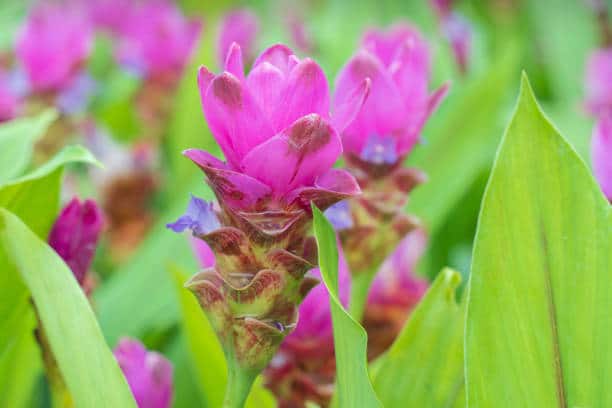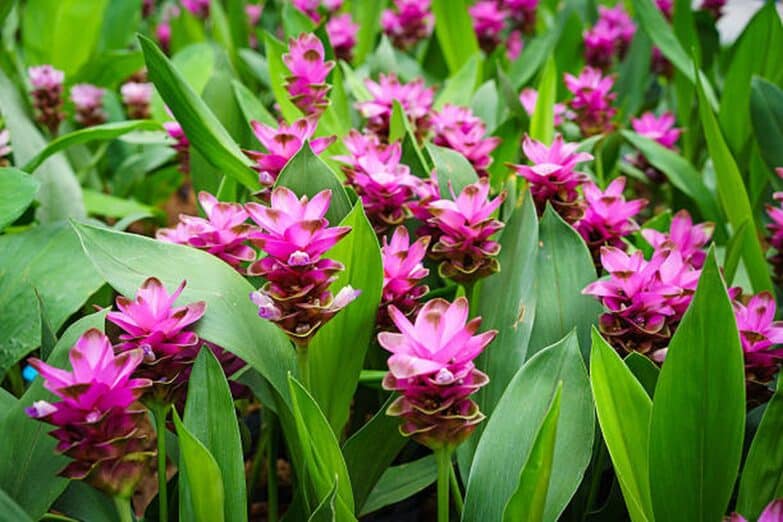Curcuma, also known as turmeric, is a stunning plant renowned for its vibrant blooms and broad, tropical foliage. Native to Southeast Asia, the Curcuma plant is a member of the ginger family and is as rewarding to grow as it is beautiful. This article aims to provide an in-depth look into the world of the Curcuma plant and provide a detailed guide on how to successfully cultivate this tropical wonder.
Understanding the Curcuma Plant
A Brief Overview
The Curcuma plant, also known as Curcuma longa, is a tropical perennial that’s most famous for its rhizomes, which are used to produce turmeric, a common culinary spice with numerous health benefits. However, the plant is also a fantastic ornamental addition to any garden or indoor plant collection, thanks to its striking flowers and lush leaves.
The Plant’s Aesthetic Appeal
Curcuma plants are truly a sight to behold. They have large, tropical-style leaves that can create a jungle-like feel in any space. But the true star of the show is the plant’s bloom—a cone-like structure, known as an inflorescence, made up of vibrant bracts that range in color from deep pink to brilliant white. The actual flowers are small and delicate, peeking out from the bracts during the blooming season.
Cultivating Curcuma: A Comprehensive Guide
Ideal Growing Conditions
Curcuma plants thrive in warm, humid environments akin to their native Southeast Asia. They prefer temperatures between 68-95°F and require a high level of humidity. The plants do well in bright, indirect light but can tolerate partial shade.
The Right Soil Mix
The soil is a crucial component of successful Curcuma cultivation. These plants prefer a well-draining soil mix to prevent the roots from becoming waterlogged. A general-purpose potting mix combined with a bit of coarse sand or perlite usually does the trick.
Planting and Propagation
Propagation Techniques
Curcuma plants are typically propagated through division. This involves separating a portion of the plant’s rhizome and planting it separately. The best time for division is in late winter or early spring when the plant is dormant.
Planting Guide
When planting Curcuma, place the rhizome about 2 inches below the soil surface, with the buds facing upwards. Water thoroughly after planting, and maintain a consistent watering schedule as the plant starts to grow.
Ongoing Care for Your Curcuma Plant
Watering and Feeding
Curcuma plants require regular watering during their growing season. However, it’s essential to allow the soil to dry out slightly between waterings to prevent root rot. As for feeding, a balanced, slow-release fertilizer applied in the growing season will keep your Curcuma healthy and blooming.
Pruning and Dormancy
Curcuma plants will naturally begin to die back after they’ve finished blooming, signaling the start of their dormancy period. At this time, it’s important to reduce watering and prune back the dead foliage.
Common Pests and Problems
Pest Control
Common pests for Curcuma plants include aphids, spider mites, and mealybugs. Regular inspections and prompt treatment can help keep these pests at bay.
Dealing with Diseases
Curcuma plants can sometimes be affected by fungal diseases, often due to overwatering or poor drainage. Symptoms can include yellowing leaves, wilting, and a general decline in the plant’s health. To treat fungal diseases, it’s necessary to improve the plant’s growing conditions, possibly repotting in a well-draining soil mix and reducing watering. In severe cases, a fungicide may be required.
Indoor vs. Outdoor Cultivation

Growing Curcuma Indoors
Curcuma plants can make a fantastic addition to your indoor plant collection. They can thrive in bright, indirect light found in many homes. However, indoor air can sometimes be too dry for these humidity-loving plants. Consider placing your Curcuma plant on a pebble tray filled with water or using a humidifier to increase the humidity level.
Cultivating Curcuma Outdoors
In warmer climates, Curcuma plants can be grown outdoors year-round. They can be a stunning addition to a tropical-themed garden, and their lush foliage provides fantastic ground cover. Outdoor Curcuma plants should be planted in a location with partial shade to protect them from the hot afternoon sun.
The Benefits of Growing Curcuma
Aesthetic and Ornamental Value
With its stunning flowers and lush foliage, the Curcuma plant can add a touch of tropical appeal to any space. Its vibrant blooms can serve as a centerpiece in any garden or indoor collection, and its broad leaves provide a fantastic backdrop to other plants.
Health Benefits
Aside from its ornamental value, the Curcuma plant is also famous for its health benefits. The rhizomes of the plant are the source of turmeric, a spice with powerful antioxidant and anti-inflammatory properties. Growing your own Curcuma plant could provide a fresh supply of this beneficial spice.
Conclusion
Growing Curcuma plants, whether for their stunning aesthetic appeal or the health benefits they offer, can be a rewarding experience. By understanding the plant’s needs and providing the right conditions, you can cultivate a thriving Curcuma plant that will add a touch of the tropics to your garden or home. From its vibrant blooms to its lush, tropical foliage, the Curcuma plant truly has it all. So why not give it a try? Your garden or indoor plant collection will thank you for it.

